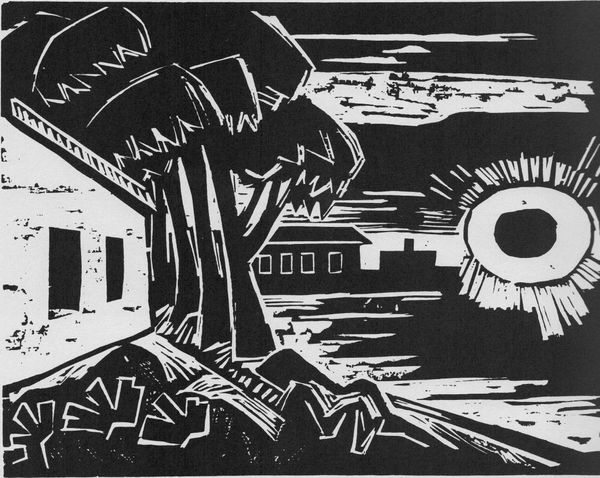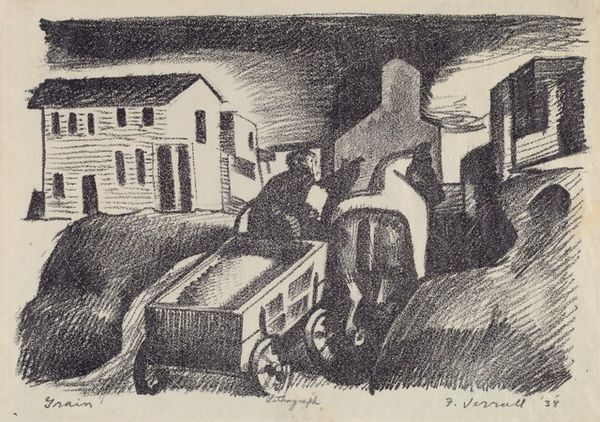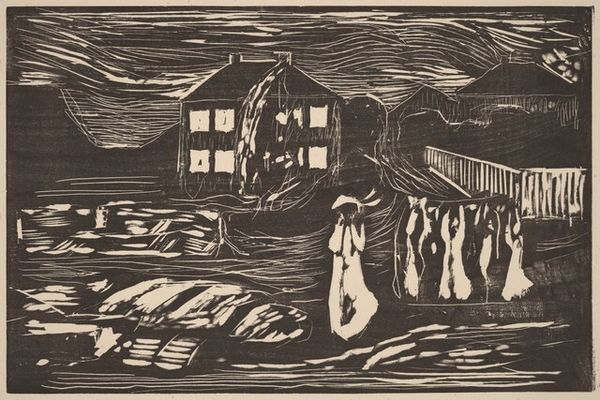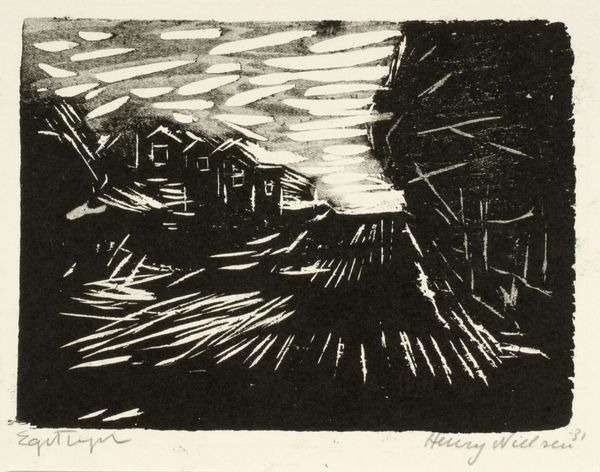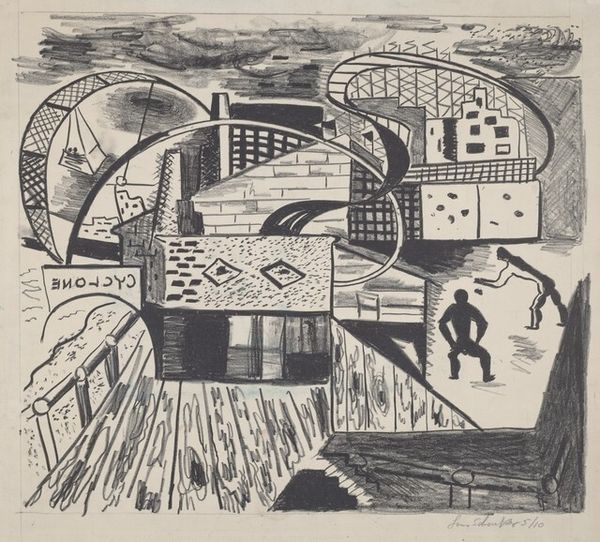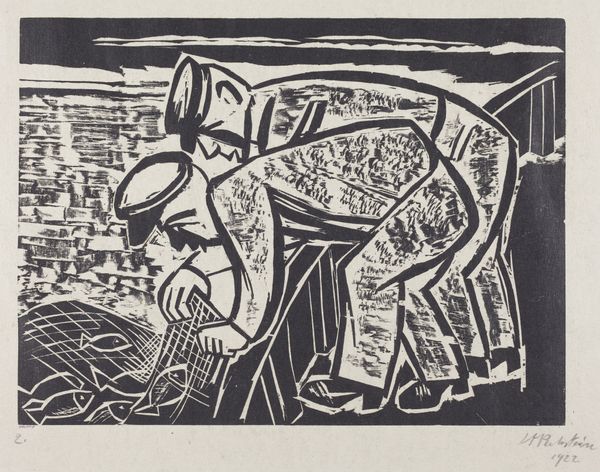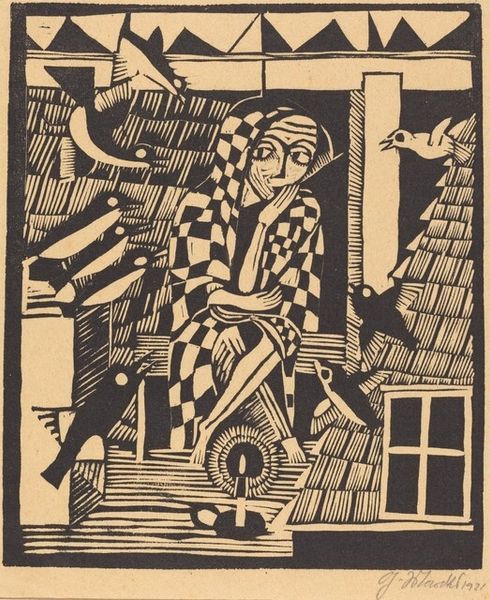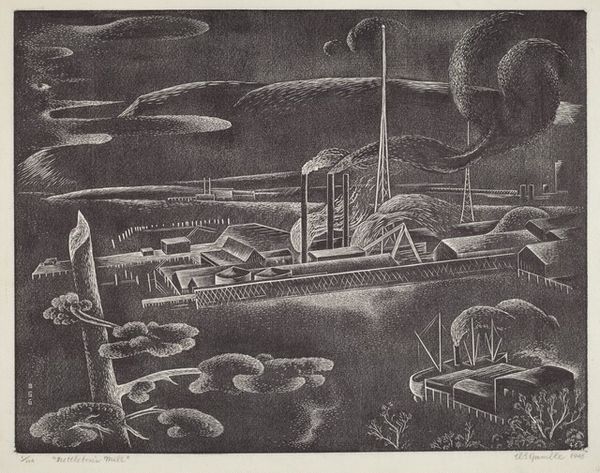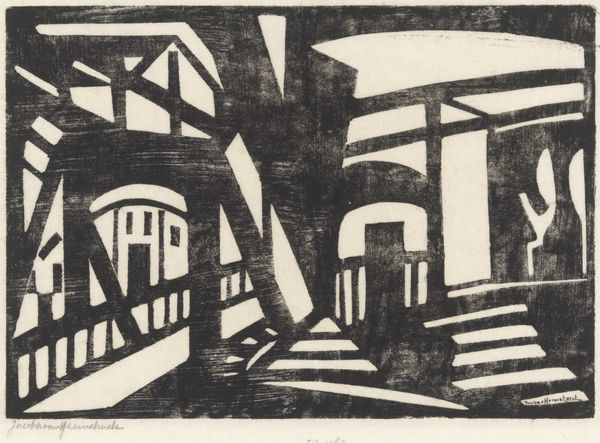
print, woodcut
# print
#
landscape
#
german-expressionism
#
expressionism
#
woodcut
Copyright: Public domain US
Editor: Today we’re looking at Max Pechstein’s 1919 woodcut, "Village Landscape". The stark black and white, along with the sharp lines, creates a somewhat unsettling feeling, despite the pastoral subject. What strikes you when you look at it? Curator: I'm immediately drawn to the way Pechstein is using the woodcut to engage with a sense of German identity after the first world war. Remember that Expressionism, especially as it played out in Germany, often served as a vehicle for social commentary and anxieties about modern life. The landscape, traditionally a symbol of stability and rootedness, is rendered here with a rawness, a certain angst, that challenges this idealized view. How does this depiction compare with the common art of his time? Editor: That's interesting! I guess the usual landscapes you’d see would be more serene. This feels deliberately rough, almost violent. It makes me think about the social upheaval and uncertainty after the war, almost as if nature itself is reflecting the inner turmoil. Curator: Precisely! Consider also the role of the woodcut itself. It’s a relatively ‘primitive’ technique. By embracing this, artists like Pechstein sought authenticity, an unmediated expression of feeling in a time of immense change and trauma. Editor: So, the choice of medium is as important as what's being depicted? Curator: Absolutely. And this interest in primitivism connects to a broader trend within German Expressionism and even relates to some of the political rhetoric employed at the time, like ‘blood and soil’ narratives, if you will. It asks what is home, country and who does it belong to. Editor: I hadn't considered how deeply political something as simple as a landscape could be. Curator: It’s a powerful reminder that art always exists in conversation with its historical and cultural context. Thank you. It makes me consider my understanding too!
Comments
No comments
Be the first to comment and join the conversation on the ultimate creative platform.
